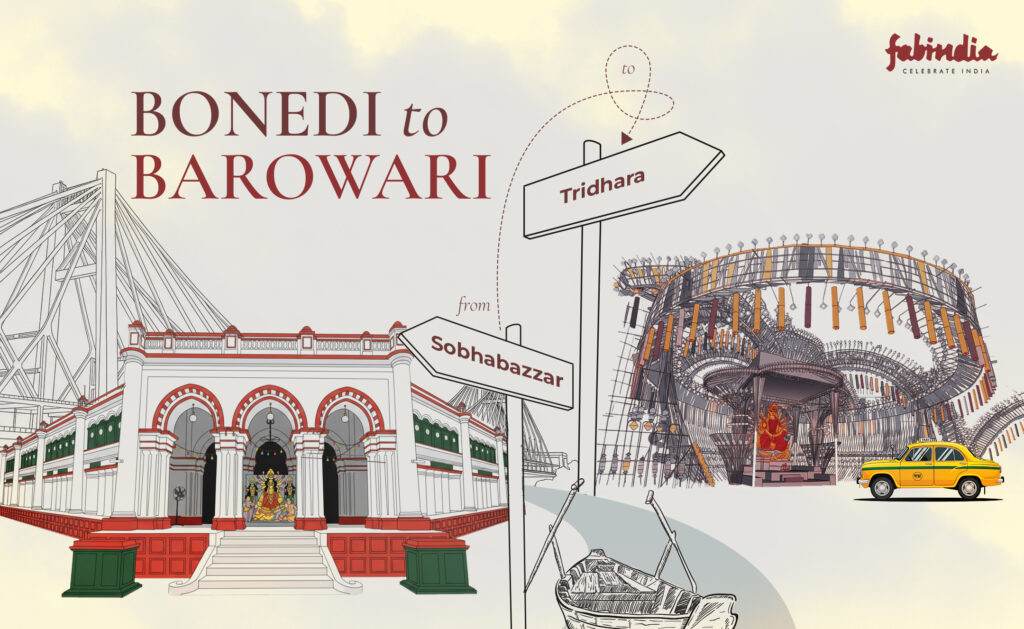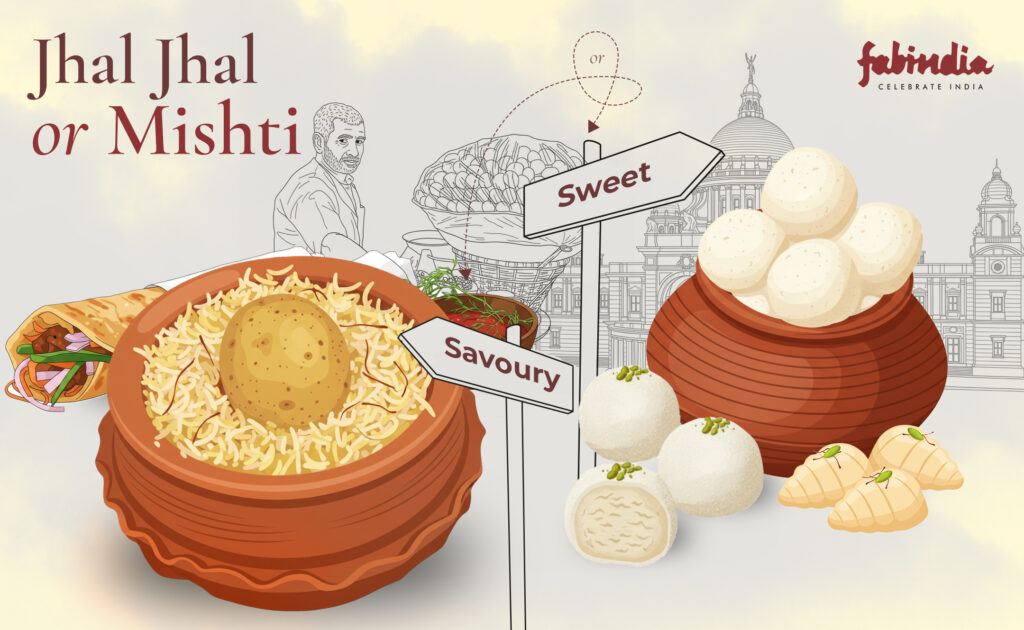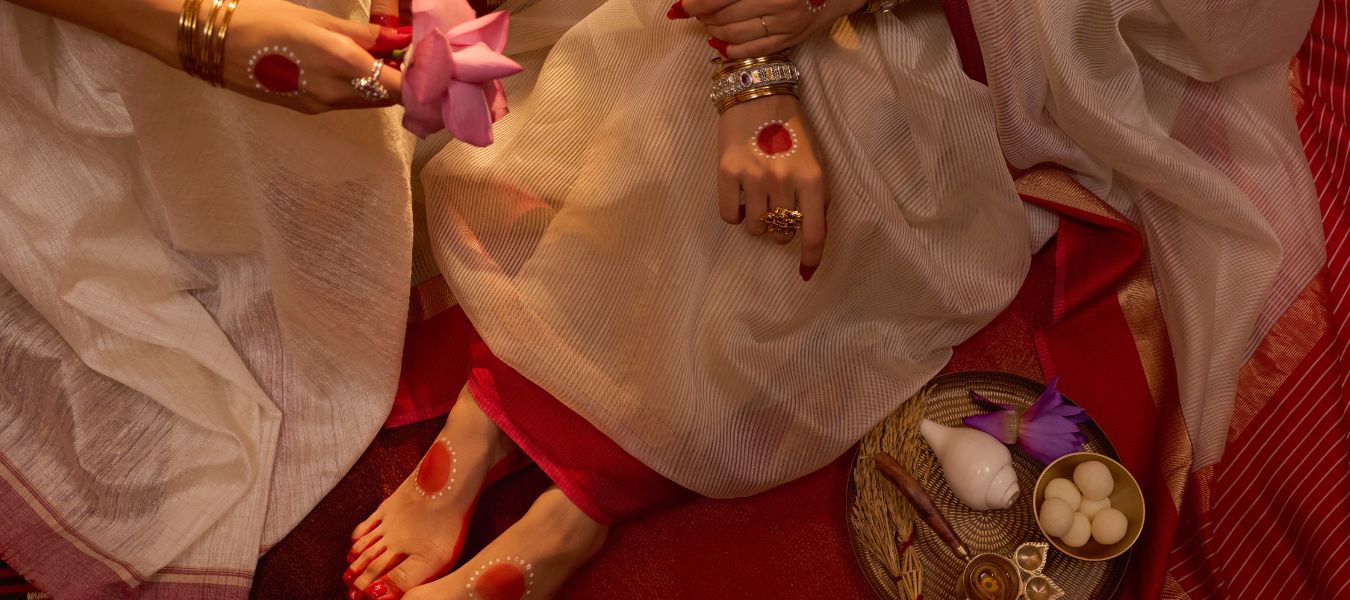বোলো বোলো দুগ্গা এলো
“Bolo Bolo Dugga Elo”
Every autumn, to this emotion, Kolkata transforms. Streets glow with lights, music spills from every corner, and entire neighborhoods turn into art galleries. This is Durga Pujo- a festival so alive that it feels less like a religious ritual and more like stepping into a living, breathing story.
The Origins: From Courtyards to Community
The story begins centuries ago, when Calcutta wasn’t a single city but a cluster of villages. Landlords (Zameendars), eager to showcase Bengal’s grandeur to the British, hosted private Durga Pujos inside their sprawling courtyards- Bonedi. Only a select few were invited. But curiosity has a way of breaking barriers. Local youths, eager to experience the magic, pooled their resources and created their own Pujo. Thus was born the Barowari tradition- twelve friends funding a community celebration. From that moment, Pujo left the courtyards and spilled onto the streets, where it truly belonged.

Durga as Daughter, Not Distant Deity
Nowhere else in India is Durga seen quite the way Bengal sees her. Here, she is not a distant goddess to be feared- she is a daughter returning home with her children. For five days, she is pampered, feasted, and loved. Rituals become less about strict rules and more about warmth and welcome. And when she departs, the farewell feels heartbreakingly personal, like sending a married daughter back to her husband’s house.
This intimacy makes Durga Pujo uniquely human. It is not god-fearing, it is god-loving.
A Festival for the Senses
Durga Pujo is not confined to temples, it is everywhere. In the glow of chandeliers strung across narrow alleys. In the scent of incense mingling with freshly made Kathi Rolls, Biryani, Rosogulla and more. In the rhythmic beats of the dhaak (drums) echoing late into the night.
Every evening, Kolkata’s streets flood with people dressed in their finest silks and cottons. There is no fear, no hesitation, just an overwhelming sense of community. Crowds in the thousands move from pandal to pandal, yet there is laughter instead of chaos, joy instead of jostling.

The City as a Canvas
What makes Kolkata’s Pujo extraordinary is its sheer creativity. Each neighborhood competes to outdo the other in designing pandals, temporary temples that are more like immersive art installations.
One year, a pandal might resemble a palace made entirely of shola (a delicate, ivory-white plant stem). Another might highlight environmental issues, with 25,000 saplings forming Durga’s abode. Step into one pandal, and you’ll find commentary on women’s empowerment; in another, the story of Bengal’s farmers or river pollution. Imagine 2,500 such stories told simultaneously across the city, each one original, each one ephemeral.
And just like that, art becomes devotion.
Ephemeral, Yet Eternal
What makes Pujo so compelling is its impermanence. Months of artistry, clay idols made with Ganga river mud, hand-painted backdrops, towering structures, exist for just five days before being washed away. And yet, they return every year, reborn, reinvented, and reimagined.
It is this cycle that keeps the festival alive, not just as a ritual, but as Kolkata’s heartbeat. To visit Kolkata during Durga Puja is not to witness a festival. It is to see an entire city transformed into a living celebration of art, love, and community. It is history retold through folklore, devotion expressed through craft, and culture made tangible through sound, light, and colour.
Durga Pujo is not just celebrated in Kolkata. In those five days- Kolkata is Durga Pujo.







